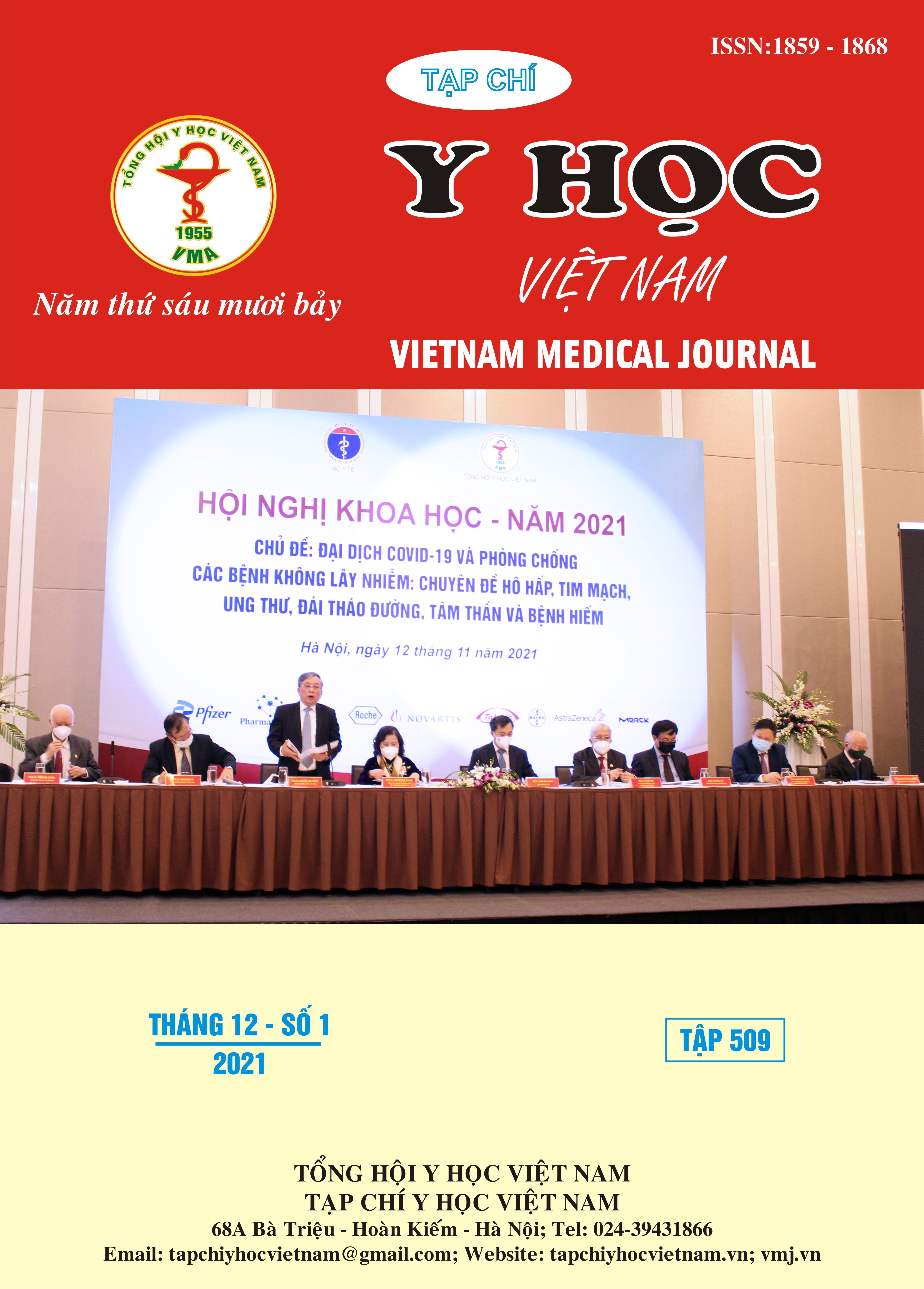CLINICAL, PARACLINICAL FEATURES AND NASAL CYTOLOGY IN PATIENT WITH ALLERGIC RHINITIS
Main Article Content
Abstract
Objective: To describe characteristics of nasal cytology of patients with allergic rhinitis at the National Hospital of Otolaryngology. Methods: In vivo study, we performed on 20 patients with diagnosis of allergic rhinitis at Clinical Allergy - Immunology Clinic, National Hospital of Otolaryngology. All patients were performed nasal cytology and evaluated the specimen characteristics based on the criteria of Jianjun Chen et al [1]. Result: proportion of groups of acidophilic, mixed, neutrophilic, low cells were 35%, 20%, 30%, 15%, respectively. There were a statistically significant differences in the level of general discomfort according to the VAS scale, in which the VAS score of the acidophilic group (8.00±0.82) hadstatistically significantlyhigher than that of the neutrophilic group (6.67±1.21) and low cells (5,67±1,53) with p-values of 0.032 and 0.004, respectively. The VAS scores of the mixed group, neutrophilic group and low cell grouphad no statistically significant differenceswith all p-values higher than 0.05. The severity of symptoms and the total nasal symptom scores of the specimen groups had no statistically significant differences with all p-values higher than 0.05. Conclusion: the nasal cytology provides valuable information on the subgroup of patients, which is significant in prognostication of disease severity in allergic rhinitis.
Article Details
Keywords
nasal cytology, eosinophils, neutrophils
References
2. Bộ Y Tế (2013), Dị ứng - Miễn Dịch Lâm Sàng, Nhà xuất bản giáo dục Việt Nam, Hà Nội.
3. Heffler E., Landi M., Caruso C. et al. (2018), Nasal cytology: Methodology with application to clinical practice and research, Clin Exp Allergy. 48(9), 1092-1106.
4. Scadding G. K., Kariyawasam H. H., Scadding G. et al. (2017), BSACI guideline for the diagnosis and management of allergic and non-allergic rhinitis (Revised Edition 2017; First edition 2007), Clin Exp Allergy. 47(7), 856-889.
5. Bộ Y Tế (2016),Hướng dẫn quy trình kỹ thuật chuyên ngành Giải phẫu bệnh, Tế bào học, Nhà xuất bản Y học, Hà Nội.
6. Kaya D., Demirezen S. ,Beksaç M. S. (2012), The presence of eosinophil leucocytes in cervicovaginal smears with Actinomyces-like organisms: Light microscopic examination, J Cytol. 29(4), 226-9.
7. Berkiten G., Aydoğdu I., Kumral T. L. et al. (2018), Nasal eosinophilia in nasal smears of patients with persistent and intermittent allergic rhinitis, J Laryngol Otol. 132(11), 1018-1021.
8. Ciprandi G., Buscaglia S., Pesce G. et al. (1995), Minimal persistent inflammation is present at mucosal level in patients with asymptomatic rhinitis and mite allergy, J Allergy Clin Immunol. 96(6 Pt 1), 971-9.
9. Wang D. Y. (2005), Risk factors of allergic rhinitis: genetic or environmental?, Ther Clin Risk Manag. 1(2), 115-23.


